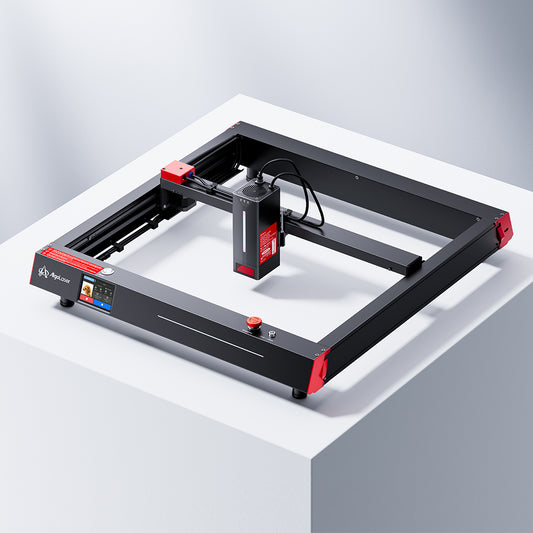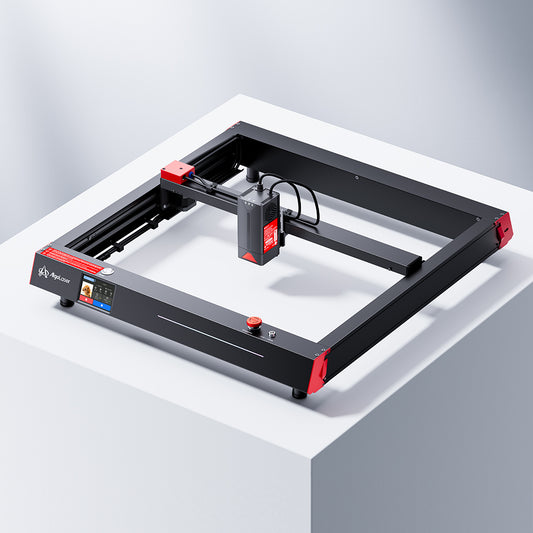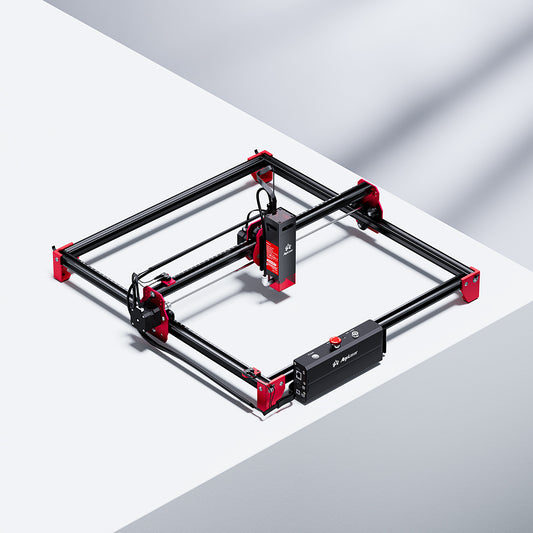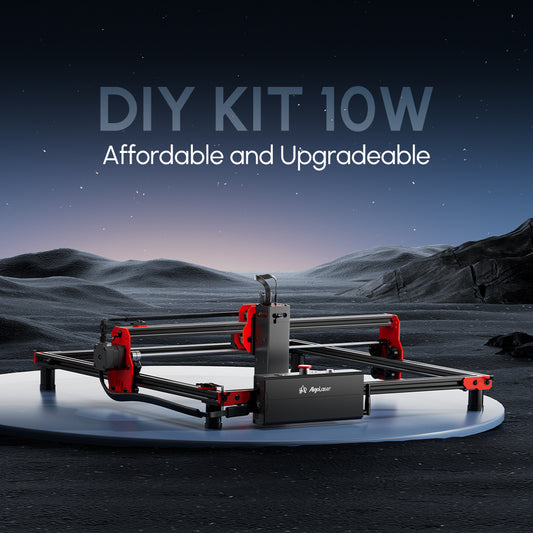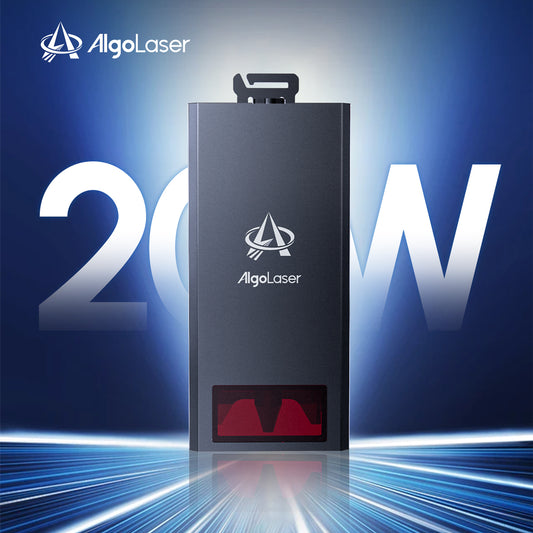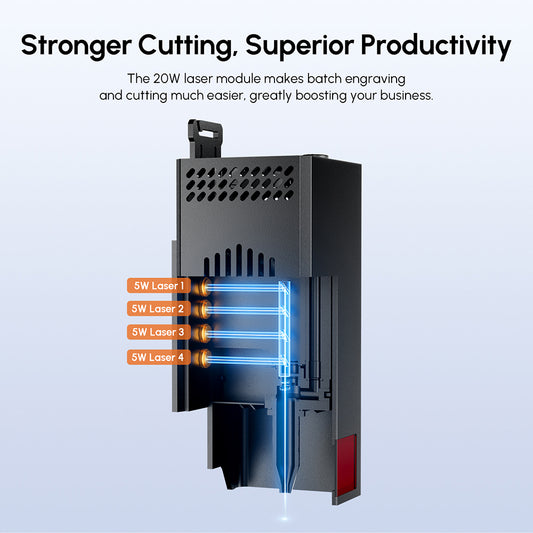Traditional Stone Carving vs. Diode, CO₂, and Fiber Lasers
Stone engraving is an art that has evolved over millennia. From the primitive chisels and hammers used by ancient civilizations to the cutting-edge diode lasers of today, stone has served as a medium for artistry, memorials, and functional objects. The arrival of laser engraving technology has made stone engraving more accessible, precise, and efficient. While traditional carving techniques are still revered for their tactile and artistic value, diode laser engraving has become a go-to method for many creators due to its affordability, precision, and ease of use.
In this expanded guide, we'll explore the different engraving methods available, compare diode laser engraving with traditional techniques and other laser types (CO₂ and fiber), and highlight real-world project ideas and community insights from Reddit to show just how versatile diode lasers are for engraving stones.
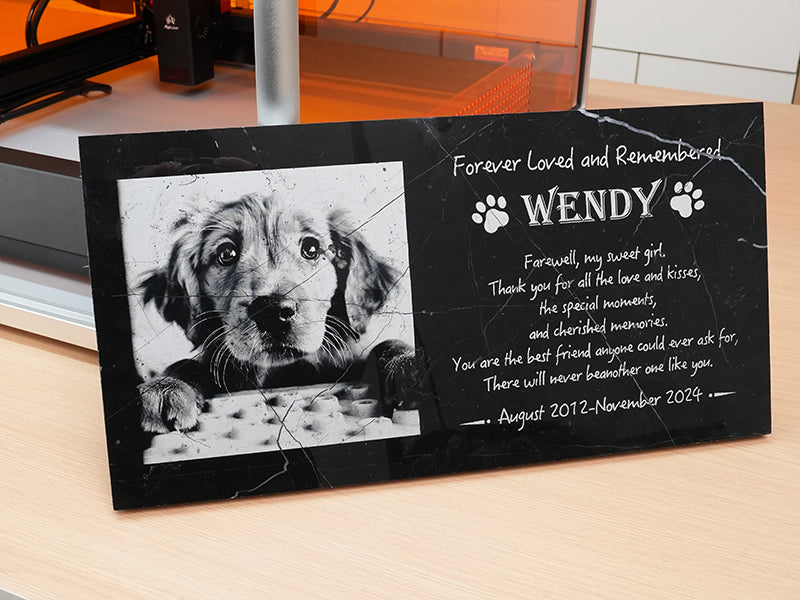
Traditional Stone Carving: Tools and Techniques
Before lasers, stone carving was a labor-intensive process. Early artisans used simple manual tools like hammers, chisels, abrasives, and even primitive grinding stones to create detailed carvings. Whether for sculptures, architectural reliefs, or monuments, traditional stone carving was a painstaking process that required immense skill, time, and patience.
Steps Involved in Traditional Stone Carving
1. Roughing Out: The first step in stone carving involves removing large chunks of stone to get the basic shape using heavy tools such as a point chisel and mallet.
2. Detailing: Once the basic shape is formed, finer chisels and rifflers (files) are used to refine the details.
3. Polishing: The final step involves smoothing the stone using abrasive materials or a polishing wheel to achieve a shiny finish.
Benefits and Limitations
· Durable Results: Traditional carvings produce tactile, deeply textured, and permanent results, often with high artistic value.
· Time-Consuming: The process can take days, weeks, or even months, depending on the scale and intricacy of the project.
· Physical Effort: It requires physical labor and a high level of manual dexterity to avoid mistakes that could permanently damage the artwork.
· Inconsistent Precision: The quality of carving depends on the artisan's experience and technique, meaning each piece is unique but potentially inconsistent.
Despite these limitations, traditional carving holds immense cultural and artistic value, especially for monumental works. However, for most modern engraving applications, laser engraving has become the preferred method for its precision and speed.
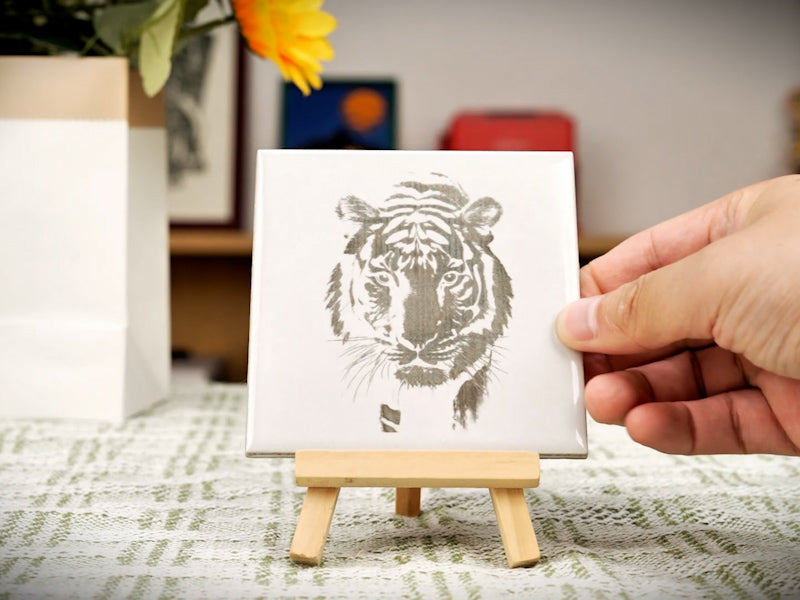
Diode Laser Engraving on Stone: A Game-Changer for Hobbyists and Small Businesses
Why Diode Lasers are Highly Recommended
Diode lasers have grown in popularity due to their affordability, compact size, and ease of use. These systems have made stone engraving accessible to a wider audience, including hobbyists, artists, and small business owners.
Key Benefits of Diode Laser Engraving:
· Affordable & Compact:Diode laser engravers are typically much more affordable than CO₂ or fiber lasers. They are also compact and portable, making them perfect for small workshops or home setups.
· High Precision: With high-resolution settings, diode lasers can achieve a precision of up to 0.05 mm, which makes them perfect for engraving intricate designs, text, or photos on stone.
· Ease of Use: Many diode lasers come with user-friendly software, making it easier for beginners to start engraving without extensive training. The machines are also low-maintenance and require little effort to keep in good working condition.
· Versatility: Diode lasers can work on a range of materials, including wood, leather, acrylic, and even stone. On stone, they are particularly effective for surface engraving, which is ideal for personalized items like plaques, coasters, or memorial stones.
Challenges of Diode Lasers:
· Limited Cutting Depth: Diode lasers typically lack the power needed for deep cuts in hard materials like granite or marble. However, they are excellent for shallow engravings and fine details on softer stones like slate, soapstone, and limestone.
· Slow Engraving Speed on Harder Stones: While diode lasers are relatively fast on softer materials, they require multiple passes and lower power when engraving harder stones, resulting in a slower process.
Comparison Chart: Traditional Stone Carving vs. Diode, CO₂, and Fiber Lasers
To provide a clearer overview of how diode laser engraving compares to traditional and other laser engraving methods, here's a detailed comparison:
| Method | Tools / Equipment | Precision & Detail | Speed & Efficiency | Cost | Durability of Result | Best For |
|---|
| Traditional Carving | Chisels, hammers, abrasives | Moderate (artisan-dependent) | Very slow, labor-intensive | Low tool cost, high labor | Very durable, tactile | Sculpture, monuments, cultural works |
| Diode Laser | Compact diode laser engraver | High precision, fine detail | Moderate speed, great for small-scale | Low to moderate | Long-lasting, surface etching | Personalized gifts, memorials, decorative pieces |
| CO₂ Laser | CO₂ laser engraver (higher power) | High precision, deep engraving | Faster than diode, deep cuts | Moderate to high | Durable, deep engravings | Industrial projects, cutting, and detailed engraving |
| Fiber Laser | Industrial fiber laser system | Extremely high precision | Very fast, high throughput | High to very high | Very durable, permanent | Professional industrial marking, jewelry, micro-engraving |
Real-World Examples: Diode Laser Projects on Stone
1. Personalized Memorial Stones
A Reddit user shared their experience using a 5W diode laser to engrave a memorial plaque on slate. The laser was perfect for engraving text and small designs, but the user mentioned needing to do multiple passes on slate to achieve a darker engraving.
"I used the laser on a small slate memorial stone for a friend. It took several passes, but the result was crisp and detailed. I filled in the engraving with black paint, which helped the text stand out even more."
2. Custom Coasters and Gifts
Another Reddit user reported using their diode laser to create custom stone coasters for gifts. They used a 20W diode laser on granite, achieving clear designs with high contrast after several passes at lower power settings.
"Creating personalized stone coasters with the diode laser was super fun. It took some trial and error, but the final product looked amazing, especially when filled with white acrylic paint."
3. Engraved Stone Tiles for Home Decor
A hobbyist shared a project where they engraved intricate tile designs on ceramic stone tiles. They achieved beautiful, detailed results after optimizing their power and speed settings for their diode laser.
"I engraved some decorative tiles for my kitchen with a diode laser. The results were crisp, and the tiles are now a focal point in my kitchen decor!"
4. Wedding or Anniversary Gifts
One user described creating personalized stone gifts for weddings and anniversaries. They used a diode laser to engrave romantic quotes on slate, combining engraving with paint to enhance contrast.
"I love how easy it is to create custom wedding gifts with my diode laser. The engraving process was quick, and the slate really holds up well, even with all the detail."
Conclusion: Why Diode Lasers Are the Best Choice for Stone Engraving
While traditional stone carving offers a timeless, tactile finish, diode laser engraving is highly recommended for its affordability, precision, and efficiency. The relatively low cost of diode laser engravers, coupled with their high precision, makes them ideal for hobbyists, small businesses, and makers working on personalized stone products.
For most users, diode laser engraving strikes the perfect balance between ease of use and professional results. Whether you're engraving memorial plaques, personalized gifts, or home décor, diode lasers provide a reliable and cost-effective solution without the steep learning curve or high investment associated with other methods like CO₂ or fiber lasers.

